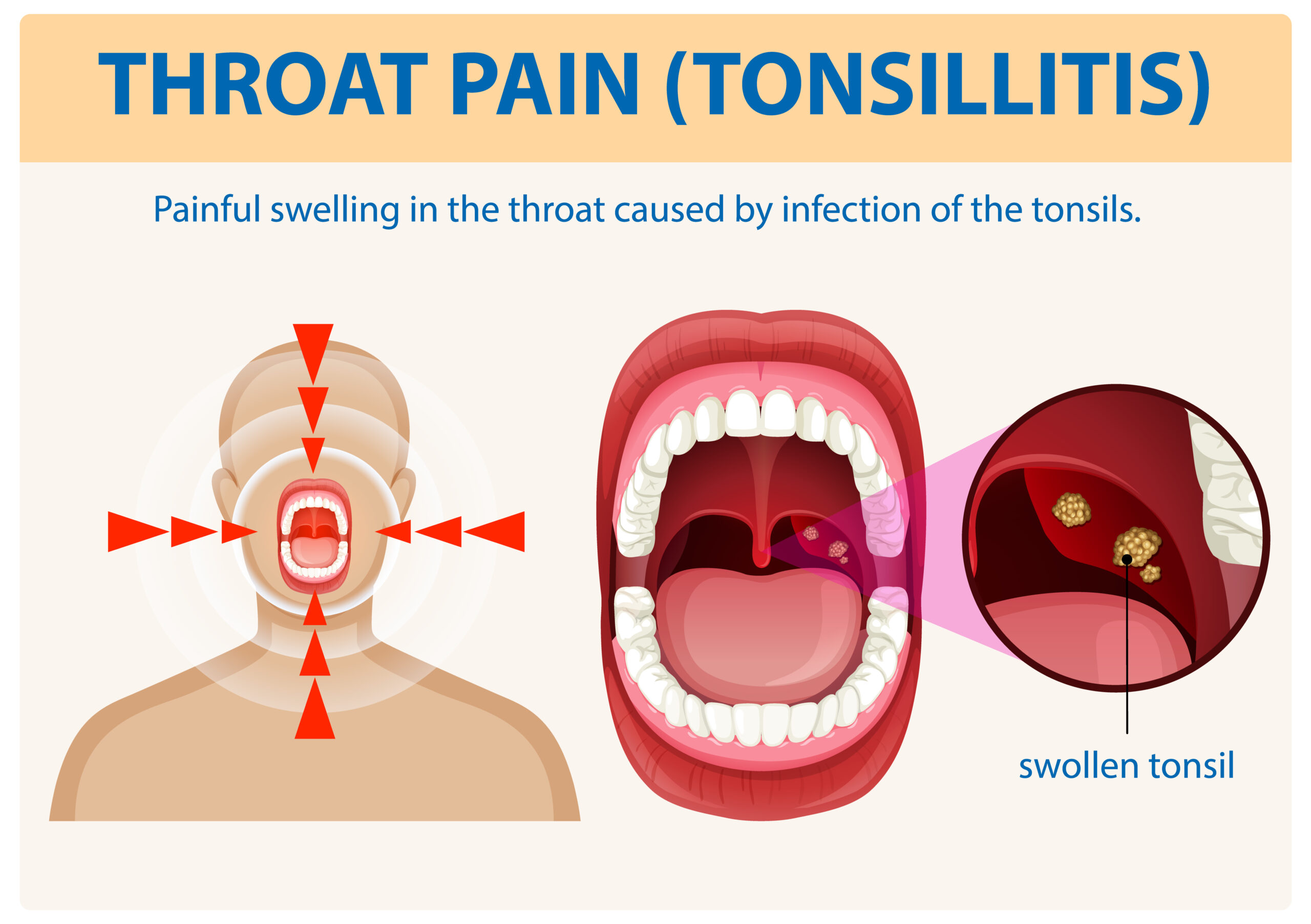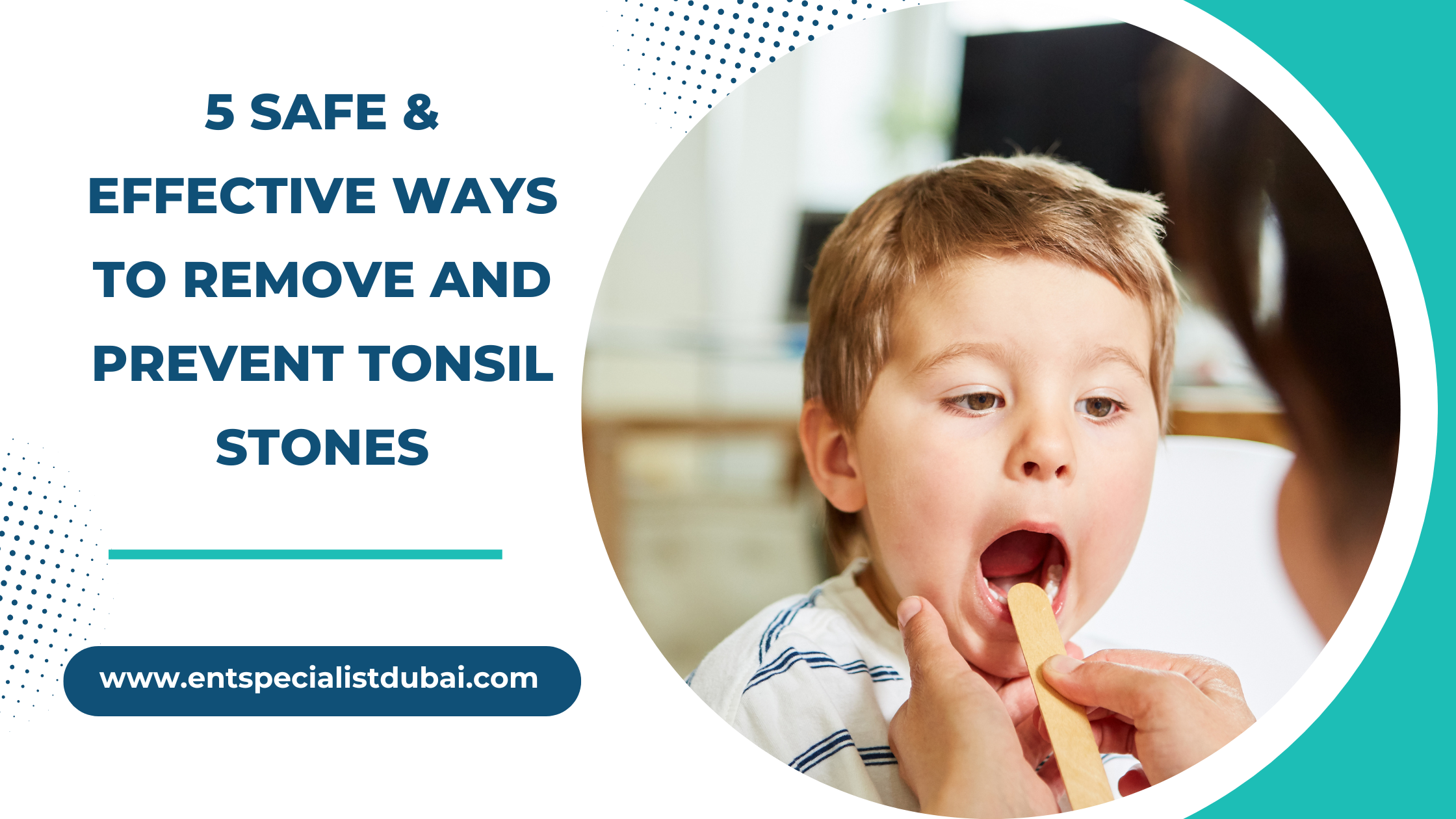Tonsillectomy surgery recovery tips - Time, Diet, Lifestyle Changes

Tonsillectomy, or the complete removal of the tonsils through surgery, is a common operation to cure repeated infections such as strep throat, sleep apnea, or chronic tonsillitis.
Although it may offer long-term relief, recovery from tonsillectomy surgery is a process that demands careful management of time, diet, and lifestyle to yield the best outcomes.
Dr. Peter Baptista, an expert ENT specialist in Dubai, provides comprehensive guidance on navigating the recovery process, helping you or your child recover quickly and comfortably.
What is tonsillectomy?
Tonsillectomy is the operation of completely removing the tonsils, ( two lymph tissues in the back of the throat). The procedure is mostly done when tonsils become infected or enlarged, leading to breathing problems, recurring sore throats, or swallowing difficulties. At this moment we do not do a complete removal of the tonsil but a partial o almost complete removal. Only in some instances is a complete removal required.
Tonsillectomy recovery time
When a complete removal is performed, most patients usually take between 7 and 10 days to heal from tonsillectomy surgery, but this may differ with age and overall health conditions.
Tonsillectomy recovery kids
Children are likely to heal quicker than adults, though the processes are pretty similar. The initial recovery period after surgery is the most critical, and the first few days are typically the most challenging. Here’s a general breakdown of the recovery timeline:
In children that a partial tonsillectomy has been performed the recovery is very good and the child will only feel a bit of pain during the week.
Child tonsillectomy recovery day by day
Day 1 to 3: Immediate post-operative care
Pain management: Immediately after surgery, one should expect throat pain, particularly upon swallowing. Pain medication from Dr. Peter Baptista will ease the pain.
Hydration and rest: Hydrate the throat by drinking water and taking cool, non-acidic beverages such as ice pops or smoothies. Rest is crucial in these initial days.
Monitoring for bleeding: Bleeding is uncommon but may occur within the first few days. The patient must be monitored for bleeding signs and treated promptly if necessary.
Day 4 to 7: Managing pain and symptoms
Pain peaks: Throat pain typically peaks between days 4 and 7. This is when the healing process can cause the most discomfort, especially as the scabs on the tonsil area begin to fall off.
Diet adjustments: Soft, easy-to-swallow foods are recommended during this period. Avoid spicy, hot or acidic foods that irritate the throat.
Rest and hydration: Continue to make rest and hydration a priority at this time, as the body requires rest to heal.
Week 2: The recovery begins to improve
Gradual pain relief: During week two, pain and discomfort following the tonsillectomy will start to reduce. Although mild discomfort may linger on, most children and adults tend to recover.
Resuming normal activities: It is important to avoid strenuous physical activities until your doctor gives the green light, as overexertion can cause bleeding or irritation.
Dietary recommendations during tonsillectomy removal recovery
Diet is very important in hastening the healing process following a tonsillectomy. Your child or you might not feel like eating in the first couple of days, and that’s fine. Emphasis should be on drinking plenty of fluids and eating soft, comforting foods that won’t hurt the throat.
Foods to eat after tonsillectomy
- Cold or room temperature foods: Cold, soothing foods like ice cream, popsicles, smoothies, and cold yogurt are excellent choices for the first few days. They help numb the throat and relieve pain.
- Soft foods: Soft foods like mashed potatoes, scrambled eggs, and soup (at room temperature) are the best for eating during the recovery period. Avoid anything with sharp edges, such as chips, which tend to irritate the throat.
- Liquids: Proper hydration is crucial. Consume lots of water, herbal teas, and non-acidic fruit juices. Steer clear of acidic beverages such as citrus juices or sodas, as they inflame the healing tissue.
Foods to avoid during the tonsil removal recovery time
- Hot, spicy, and acidic foods: Hot beverages, spicy foods, and acidic foods such as citrus irritate the throat and slow healing. Do not consume them during the early recovery phase.
- Crunchy or hard foods: Nuts, crackers, and raw vegetables can irritate the throat and be painful to eat during the recovery period.
When a complete removal is performed, most patients usually take between 7 and 10 days to heal from tonsillectomy surgery, but this may differ with age and overall health conditions.
Lifestyle changes for faster recovery
Rest is key
A tonsillectomy requires proper rest during the recovery process. Children and adults must avoid engagement in activities that raise heart rate or blood pressure, as they tend to bleed or delay the healing process.
During the initial days, focus on rest, hydration, taking pain medication as advised, and sleeping or resting as much as possible. Create a relaxed and comfortable environment, especially for children, for faster healing.
Pain management
Pain relief medications are typically prescribed to alleviate discomfort during the recovery period after surgery. Following Dr. Peter Baptista’s instructions on the dosage and frequency of pain relief medications is crucial.
Over-the-counter medicines like acetaminophen may also be recommended, but always consult with your doctor before taking any medications.
Signs of complications
Infection: While infections are rare, it is essential to monitor the throat for signs of infection, including fever, excessive pain, or unusual discharge. If you experience any of these symptoms, contact Dr. Peter Baptista immediately.
Dehydration: You or your child may become dehydrated from inadequate fluid intake, so take care that plenty of fluids are consumed during the recovery process.
Bleeding: A slight bleeding in the first few days is to be expected, but if you experience heavy bleeding or blood clots, get help immediately.
When to seek medical attention?
Although tonsillectomy recovery is usually smooth, there are sure signs that you should not ignore. If any of the following occur, you should immediately contact Dr. Peter Baptista:
- Persistent or severe bleeding
- High fever
- Extreme pain that doesn’t get better with pain medication
- Difficulty breathing or swallowing
- Signs of infection, including pus or abnormal discharge
- Strep throat after tonsillectomy
Final thoughts on tonsillectomy recovery
Recovery from a tonsillectomy procedure requires time, patience, and reasonable care. You or your child can recover smoothly by observing the proper dietary regimen, taking the needed rest, and closely watching for any signs of complications.
Dr. Peter Baptista provides professional tonsillectomy recovery care and guidance to make the process as convenient and comfortable as possible. If you’re thinking about tonsil surgery or need assistance with recovery, contact Dr. Peter Baptista for customized treatment solutions based on your requirements.
Consult Dr. Peter Baptista for expert tonsillectomy care in Dubai today!

Dr Peter Baptista Jardin
European Board Certified ENT Doctor In Dubai
Dr. Peter Baptista Jardin is an ENT specialist with a special interest in treating sleep apnea. He is a revered expert in Spain for performing the first ever robotic transoral surgery in 2011, and the only series of hypoglossal nerve stimulation proved revolutionary for obstructive sleep apnea treatment worldwide. He currently serves as an ENT doctor in Dubai’s Al Zahra Hospital.




